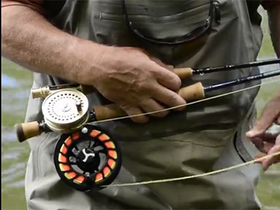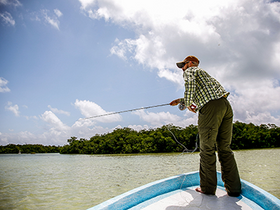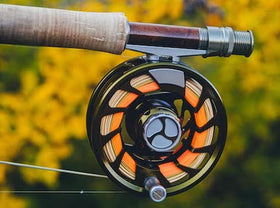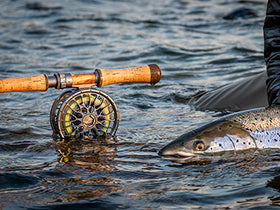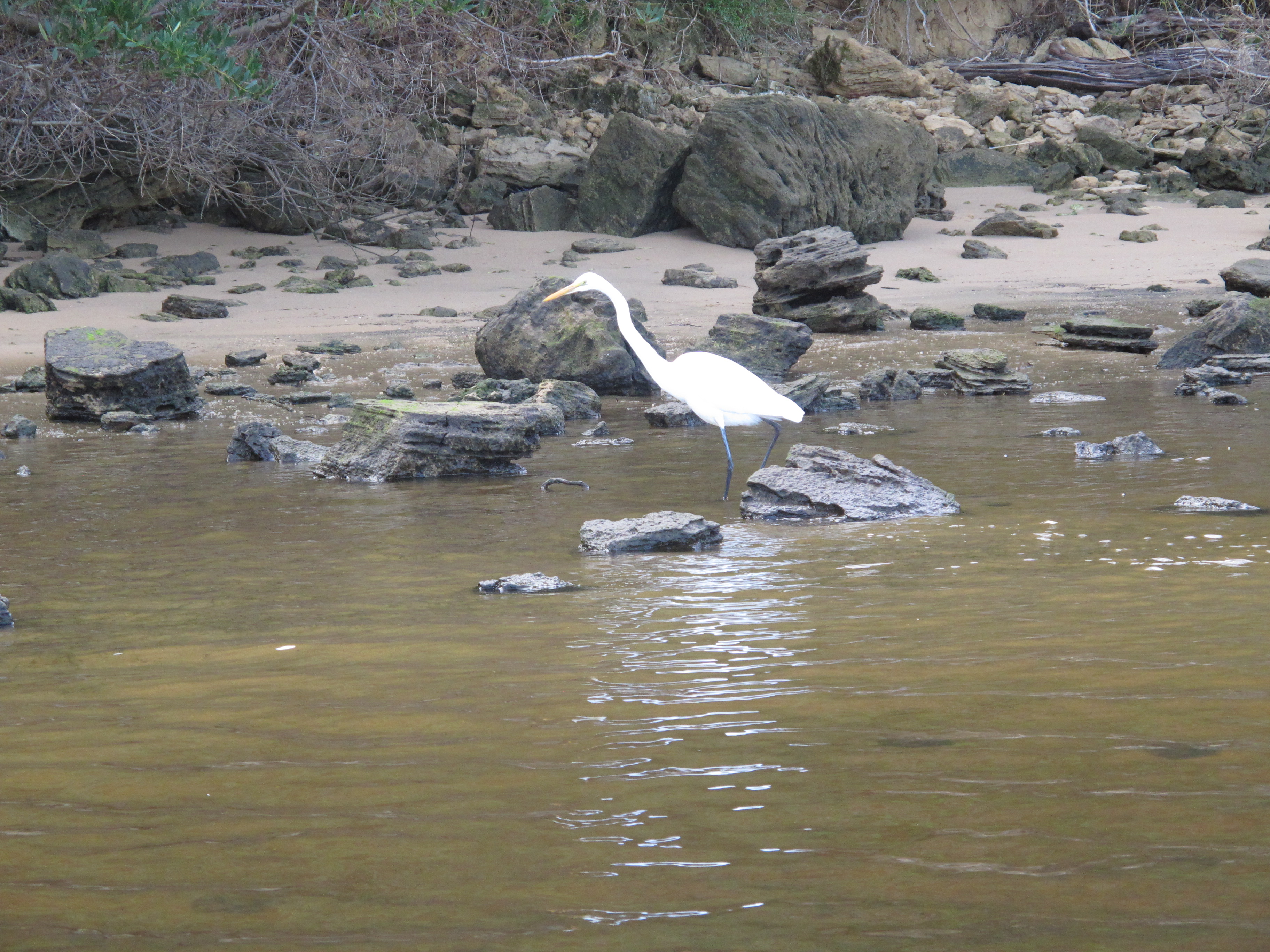
Stopping and watching at Lake Eucumbene.
There’s something about the end of the trout stream season (and I’ve seen quite a few of them now) which seems to invite reflection. That’s a little odd, because really, these river seasons are just an arbitrary marker – my lake, sea and estuary fishing continues unabated. Still, there is a sense of the end of something which invites review. How was it? What were the highlights (or low points!), and what did I learn?
You might think that last question would have been answered ages ago after half a century with the fly rod, but far from it. Some seasons, it almost seems like the more I experience, the less I know! Reassuringly, at other times it’s more a case of the season’s experiences emphasising, or maybe even crystallising, a long-held thought. This is actually most likely if the conditions have been harder than usual, which, with cormorants first, and then lack of water, 2024/25 certainly was.
I’m not suggesting for a moment that I don’t enjoy the generous seasons with lots of water, lots of trout, and few predators. But there’s no doubt I learn more when I have to work for my fish. And while this trout season’s lessons were specific to trout, there’s certainly been some spillover to how I fish for other species.
The experience of others
As the story was told by a mate late this summer just gone, he invited his friend – let’s call him Jack – over to show off some of his local stream fishing. Without betraying any location confidences, there was one particular stretch of a particular river which he had in mind. Maybe 500 metres long, this piece of water had performed consistently for months.
A couple of days before Jack’s visit, my mate scouted it again, just to be on the safe side. Sure enough, without making a cast, he noted a number of rises in the likely (and not so likely) spots. He even polaroided the shapes of a couple of trout, busily swaying from side to side in feeding fashion.
On the appointed day, Jack arrived at my friend’s house, and after a coffee to let the day warm up a bit, off they drove to the river. Being the good host, my mate made a couple of fishing and fly suggestions (like, fish near cover, use a small Wulff or Hopper, and aim for a good drift) then stood back and let Jack take over.
Now, my friend has more fine qualities than I have space to list, but if he has a failing (and is it even a failing?) it’s to be less than forthright in his offering of advice on the water. Despite his encyclopaedic knowledge of his local streams, he is reluctant to be too prescriptive. A naturally humble man, he is at pains not to ‘over’ guide his companions, perhaps assuming it’s insulting to tell a fellow angler what to do.
For example, he will gladly divulge that there’s often a big trout feeding in the backwater up ahead, but perhaps not go so far as to suggest using the half-fallen wattle on the bank above as cover. If you’re careless enough to blunder onto the skyline without hiding behind the wattle, don’t expect him to shout a warning about your pending spook of the resident fish.
In any event, from immediately after arrival, and as my mate watched on with increasing dismay, Jack apparently strode up the river with careless pace. Jack’s ‘fishing’ evidently consisted of randomly peppering the water with his dry. Within 30 minutes, Jack had finished the stretch my friend had planned to spend hours on. Jack had missed two rises and not caught a single trout.
Give them time to appear
This experience follows a theme that’s really been brought home to me this last year or so: the frequent value of slowing down.
Sometimes, it’s simply about giving the fish time to appear. Whether at Lake Fyans, Bullen Merri or Eucumbene for example, merely standing or sitting inconspicuously on a high bank with a decent view, is often as good a tactic, if not better, than striding along for kilometres looking for fish. Providing you’ve already identified a particular spot as a good bay, shore or backwater, stopping and staring while giving the fish time to appear, can be a winning tactic.
For a start, focusing on a piece of water can be a bit like one of those ‘magic eye’ images. At first, it seems like nothing will happen. But then, as the seconds tick by, you start to tune in to the nuances of the surface, and the lake or riverbed beneath. After a while, a fish appears as a shape or movement you only notice because you haven’t moved. Likewise, that barely audible sip right against, or even under, the bank which you wouldn’t have heard over your footsteps in the grass or gravel. Racing Jack, from the beginning of this story, is simply not going to notice this stuff.
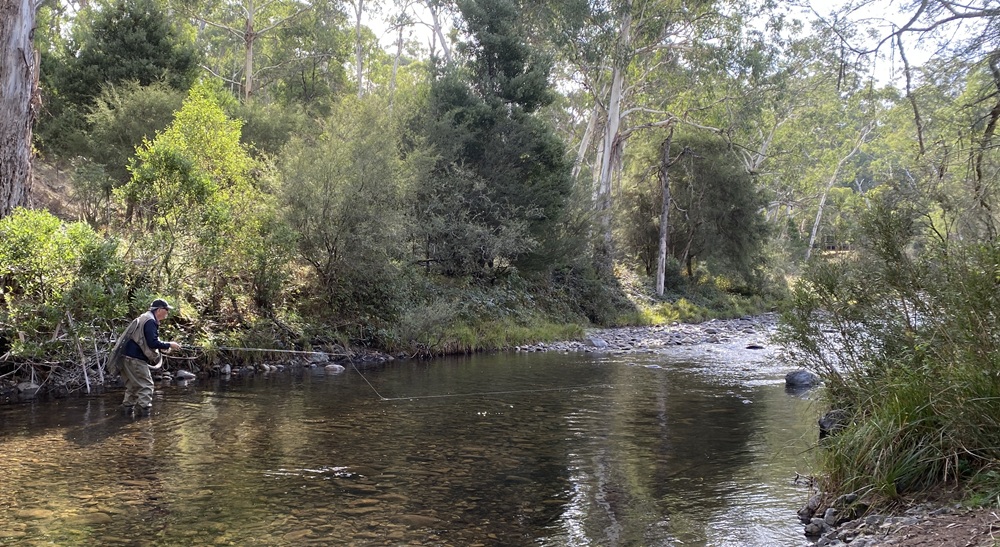
Being slow and thorough when fishing the limited 'best bits', was absolutely essential to success on a low Howqua River this May.
Work the water well
Even when you can’t see fish, it’s often a question of being thorough with drifts, depth, and so on. Sure, some days, the fish will move aggressively – I once watched a Kiewa brown literally cross the river in response to the plop of my hopper pattern.
Other times though, that dry fly has to absolutely tickle the overhanging tussocks, or your nymph must literally bounce the bottom in the key slot; rather than after it has passed half a metre above. This need to be meticulous and persistent, is amplified if the trout themselves have been slowed down by something. Predator pressure (making the trout ultra cautious about showing themselves), general lack of food (yes, the opposite of humans), or being lethargic (relatively speaking) in very warm or very cold water. All these things tend to blunt a trout’s inclination to move for food – real or artificial. Offer it on a platter, or forget it. And you can amplify all this when it comes to the vagaries of native species like cod, estuary perch and bream.
Older… or smarter?
Not that slow is always best. Sometimes, it can still pay to explore a lot of water fairly quickly – lake, stream; estuary or ocean. But the mission even then is not to scattergun up the stream or along the shore. Rather, it’s to find those areas where the action or activity is concentrated. Then, having found the hotspot, being careful and thorough pays off.
Meanwhile, self-awareness forces me to ask, is this slow and careful thing just a function of getting older? Or is it something I should have done forever, even when prancing up a bouldery torrent was as easy as walking on a level footpath.
I remember decades ago writing about a River Test guide by the name of John Smith (yes really) who brother Mark and I hosted on an Indi River trip. We gave John literally a kilometre of water, then headed way downstream. I think, at least subconsciously, we were showing off the abundance of Aussie trout water we had access to for the price of a $30 fishing licence.
When we caught up with John hours later, we were amazed (and perhaps even a little frustrated) that he had moved only a couple of hundred metres upriver. Thankfully, it turned out John had caught plenty of nice trout even so (at least as many as us), which blunted our disappointment that he had somehow ‘wasted’ the opportunity to fish as far as he liked.
At the time, Mark and I concluded (and I may have even written) that John had fished so slowly simply because back home, he would have been accustomed to a few hundred yards of a given River Test beat. With so little water, relatively speaking, he was obliged to fish it slowly, lest he run out before the day was up. We assumed John had simply transferred this fishing pace (albeit unnecessarily) to our waters.
But now I can see that John’s careful and thorough progress upriver was probably a conscious tactic I should have paid closer attention to. Constantly seeking redemption around the next bend, or in the next bay, can sometimes be self-defeating.
An early season reminder
A few weeks into the 2024-25 stream season, a grade 2 calf tear, courtesy of a grass-covered rabbit hole, forced me to take it easy for a few weeks. Effectively, slippery river rocks and fast currents were out.
To get my early season fix while keeping the physio happy (or at least no more unhappy than necessary) I had to settle for a picnic area stretch of river, complete with tables and manicured grass banks. With less than a hundred metres of water that fitted my temporary risk profile, I fished about as slowly per square metre of trout stream as I can ever recall. My teenage self would have been appalled.
Hobbled but effective on the picnic ground stretch.
But as it turned out, my snail-paced fishing was a blessing. With overcast skies and water temperatures in single figures, the trout were evidently as sleepy as any would-be picnickers who had left the park deserted on this cold, grey September day.
Often, I fish this stretch in minutes, if at all: just a few casts into the ‘best’ bits before walking up to the ‘real’ water beyond the chattering adults and playground kids. This time, it was doctor’s orders pace, and I was surprised how easily I got into the groove. It almost became a game to see how many casts and drifts I could make before I was completely satisfied any trout would have seen my caddis grub or platinum bead PTN – and seen it at its best.
While my fishing companion JD graciously walked down to deeper, more treacherous and hemmed-in water below, I picked my way carefully through the picnic area stretch. It soon became apparent this was a game of inches, with the trout barely willing to move for the nymph. Not only that; I assumed these fish would still be behaving with a caution brought on by the recent cormorant plague, amplified by season-opening fishing pressure. Any predator cover, no matter how innocuous, would be worth extra effort.
An hour later (an hour which I normally would have regarded as a ridiculous amount of time to spend on such a short and heavily-fished piece of water), I’d landed four respectable browns, and dropped or missed at least as many. Had I fished through this stretch at regular pace, I suspect it would have appeared empty.
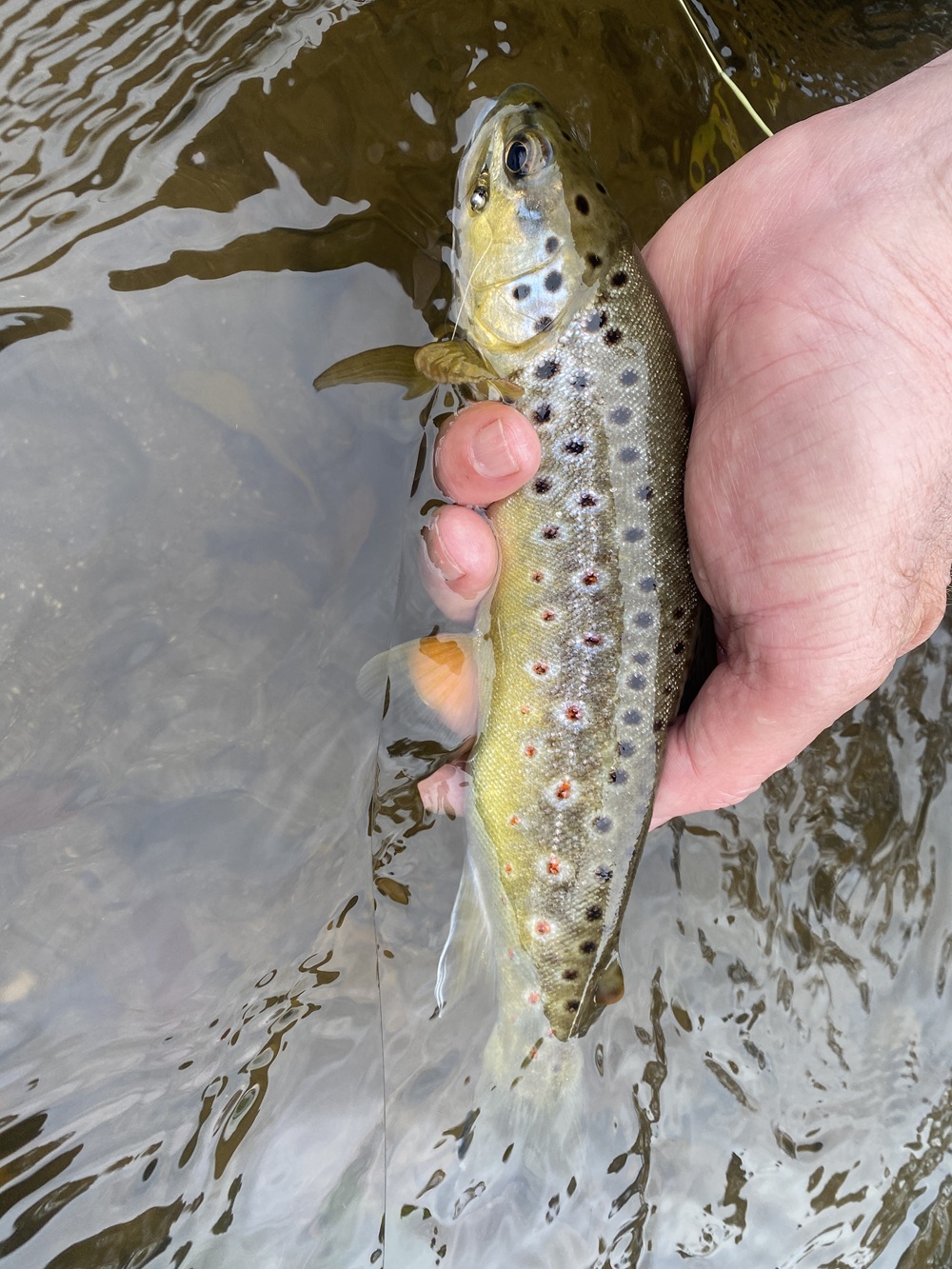
I doubt I would have caught this trout (and three of its neighbours) if I'd been fishing at normal pace.
Stop and look
Believe it or not, high on a Tullaroop bank last winter, I was fighting the urge to lose concentration while my son Daniel explored further down the bank. It was a while since I’d visited this lake, and although the water was clear now, on previous visits, a lot of it had been horribly – and mysteriously – discoloured. While experience has taught me that trout can cope amazingly well with dirty water, this event had dragged on for many months. It didn’t help that a couple of reliable contacts had reported no sign of trout.
On the upside, the fundamentals stacked up well. Good stocking rates by Fisheries Fish stocking database - VFA had continued, and the lake had held a healthy volume of water for years. And on the day in question, the wind was light, providing lots of calm water – ideal for spotting any disturbance from a distance.
Still, after carefully scanning a few hundred metres of shore for nothing besides a couple of deceptive dabchick swirls (how do they hold their breath so long?) I was tempted to sweep a big wet through as much water as possible, as quickly as possible. Maybe if I searched a large enough area of water, fly and fish would eventually be in the same place at the same time.
I tried this for several minutes, but with lack of confidence in the number of trout actually present, I soon found I was just going through the motions. Although ‘blind’ searching can be a very productive technique, without accompanying belief, it rarely works.
So, after a while, I found an elevated perch with a good view over a long stretch of shoreline. Under cold and grey skies, I couldn’t see in very well, but I was confident I would notice any surface disturbances if they creased the glassy water.
For the first few minutes, the lake was lifeless except for those dabchick false alarms. My mind began to wander. Was there a better shore to investigate, or even a better lake? I was thinking of other options and how long the move would take, keeping in mind the limited midwinter daylight, when I noticed the shimmer of nervous smelt down in front of me. Then, further up to the right, a bow-wave close the bank. That was enough. I made my way down the slope and called out to Daniel. “One up here too,” he replied from the next bay.
Once at water level, I began methodically searching with an Olive Zonker pattern Bendigo Flyfishers elder Roger Booth had recently given me. Again, the challenge was staying focussed and present, although this was much easier to achieve having almost certainly sighted a trout in the area. Cast, let the fly settle, figure-8, watch the line, hang/ dibble, repeat.
After several such presentations, and just as Daniel returned from a hit and a miss from his fish, a big brown snatched at the Zonker moments before it left the water. It fought as hard as you would expect, before finally ending up in the net. Once again, slowing down appeared to work.
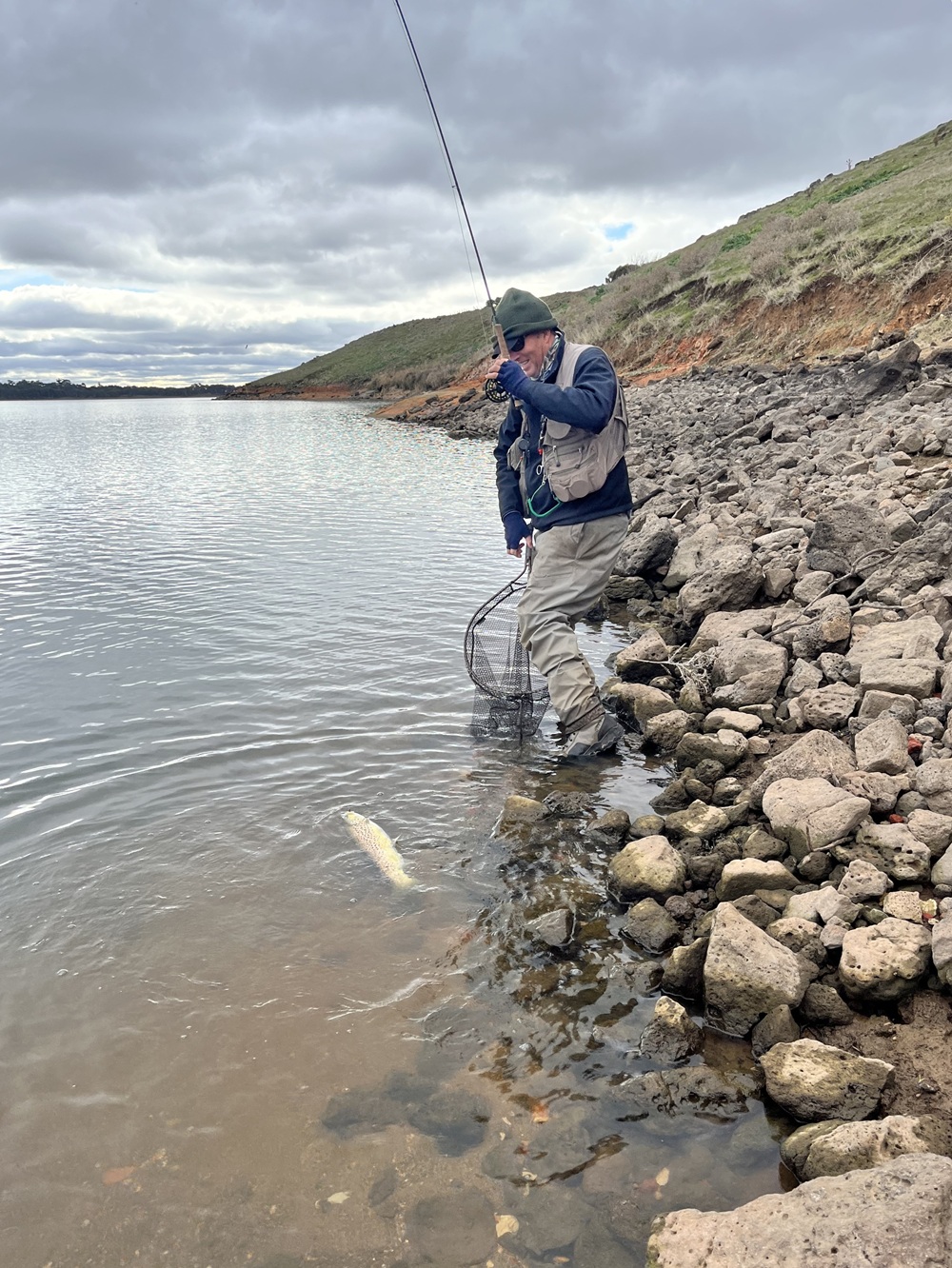
Sitting and watching for several minutes from the high bank above, gave this Tullaroop smelter time to show itself.
Slow reward
Aside from the points made earlier, not rushing around has to be a better fit with blending in. Many anglers before me have made the point that other predators tend to move slowly and carefully before the strike – just watch a heron, kookaburra, egret or crocodile. Fast and jerky alerts the fish (and any other wildlife) that something up to no good is nearby; slow and smooth much less so.
Move like an egret.
Next time I want to race off, I trust at least a part of me will ask, “Are you sure?”





